1. Overview of Cao Bang Geopark
Located in northeastern Vietnam, Cao Bang Geopark was officially recognized by UNESCO in 2018. With an area of over 3,000 km² spanning nine districts of Cao Bang province, the Cao Bang Geopark is a remarkable destination where geology, biodiversity, history, and culture are deeply intertwined.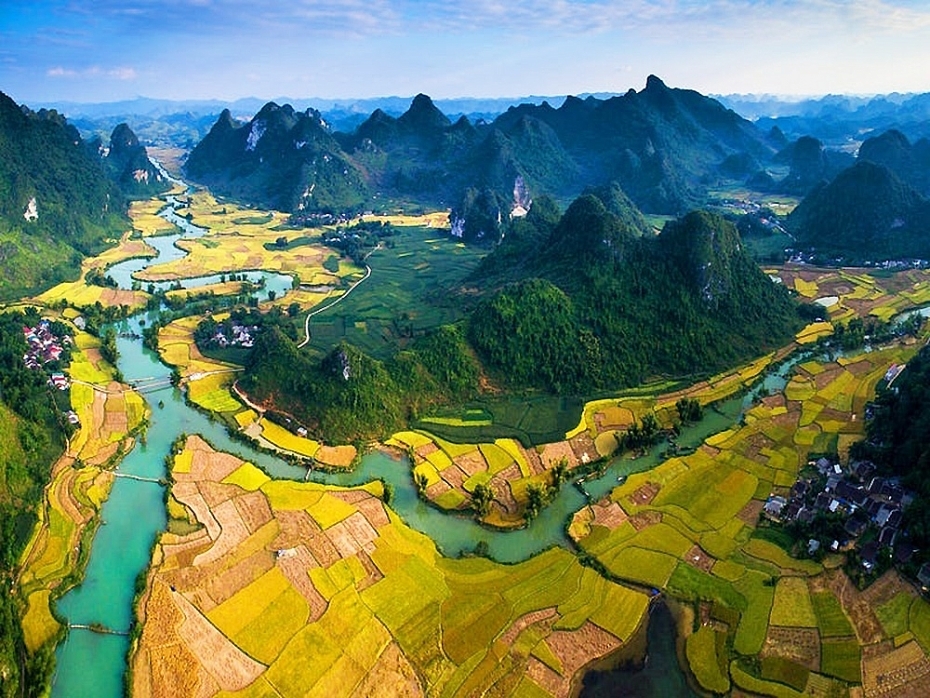 Cao Bang Geopark is home to more than 130 unique geological heritages, dating back more than 500 million years. This diverse landscape includes towering limestone mountains, rushing rivers, clear lakes, and lush forests, creating a paradise for biodiversity and a playground for adventurers. Typical natural wonders such as Ban Gioc waterfall, Nguom Ngao cave, and mysterious valleys are highlights that attract tourists from all over the world.
In addition to its geological significance, the Cao Bang Geopark also preserves the cultural heritage of more than nine ethnic minorities, including the Tay, Nung, Dao, Hmong, and San Chay. Their traditional villages, crafts, festivals and cuisine add authentic cultural depth to any visit.
Today, Cao Bang Geopark is not only a scientific research site but also an emerging ecotourism destination. It offers visitors the opportunity to explore pristine nature, learn about unique cultural traditions and gain a deeper understanding of Earth’s history.
Cao Bang Geopark is home to more than 130 unique geological heritages, dating back more than 500 million years. This diverse landscape includes towering limestone mountains, rushing rivers, clear lakes, and lush forests, creating a paradise for biodiversity and a playground for adventurers. Typical natural wonders such as Ban Gioc waterfall, Nguom Ngao cave, and mysterious valleys are highlights that attract tourists from all over the world.
In addition to its geological significance, the Cao Bang Geopark also preserves the cultural heritage of more than nine ethnic minorities, including the Tay, Nung, Dao, Hmong, and San Chay. Their traditional villages, crafts, festivals and cuisine add authentic cultural depth to any visit.
Today, Cao Bang Geopark is not only a scientific research site but also an emerging ecotourism destination. It offers visitors the opportunity to explore pristine nature, learn about unique cultural traditions and gain a deeper understanding of Earth’s history.
2. Cao Bang Geopark map
The Cao Bang Geopark Map helps visitors explore the vast area of over 3,000 km², spanning nine districts of Cao Bang Province. The map highlights three main routes, each telling a unique story of geology, history and culture: The Western Route – Experience Phia Oac, the Mountain of Transformations: This Western route highlights the biodiversity and geological changes of the Phia Oac – Phia Den area. Visitors can explore the primeval forests, French colonial heritage and cool mountain climate, making this one of the freshest destinations in Cao Bang.
The Northern Route – Experience History and Freedom: A journey combining breathtaking natural wonders with significant historical landmarks. The route includes famous sites like Ban Gioc Waterfall, Nguom Ngao Cave, and Pac Bo Historical Complex, where President Ho Chi Minh lived and worked during the early years of Vietnam’s revolution.
The Eastern Route – Experience Traditional Culture in a Wonderland: This route will certainly be an impressive highlight for tourists. Besides the ancient karst landscapes, fossils with famous tourist destinations, visitors can also explore many traditional craft villages, festivals, traditional costumes and unique cuisine of the Tay and Nung people.
These three routes form a complete experience map, guiding visitors through a journey that combines geology and culture, making Cao Bang Geopark one of the most attractive UNESCO recognized destinations in Southeast Asia.
The Western Route – Experience Phia Oac, the Mountain of Transformations: This Western route highlights the biodiversity and geological changes of the Phia Oac – Phia Den area. Visitors can explore the primeval forests, French colonial heritage and cool mountain climate, making this one of the freshest destinations in Cao Bang.
The Northern Route – Experience History and Freedom: A journey combining breathtaking natural wonders with significant historical landmarks. The route includes famous sites like Ban Gioc Waterfall, Nguom Ngao Cave, and Pac Bo Historical Complex, where President Ho Chi Minh lived and worked during the early years of Vietnam’s revolution.
The Eastern Route – Experience Traditional Culture in a Wonderland: This route will certainly be an impressive highlight for tourists. Besides the ancient karst landscapes, fossils with famous tourist destinations, visitors can also explore many traditional craft villages, festivals, traditional costumes and unique cuisine of the Tay and Nung people.
These three routes form a complete experience map, guiding visitors through a journey that combines geology and culture, making Cao Bang Geopark one of the most attractive UNESCO recognized destinations in Southeast Asia.
3. Highlights of Cao Bang Geopark
3.1. Ethnic Cultures
Cao Bang is a land of cultural diversity, home to more than nine ethnic minorities such as Tay, Nung, Dao, San Chay and H’Mong… Each ethnic group preserves its own customs, traditional stilt houses, colorful costumes, handicrafts, and folk songs such as Then and Sli singing.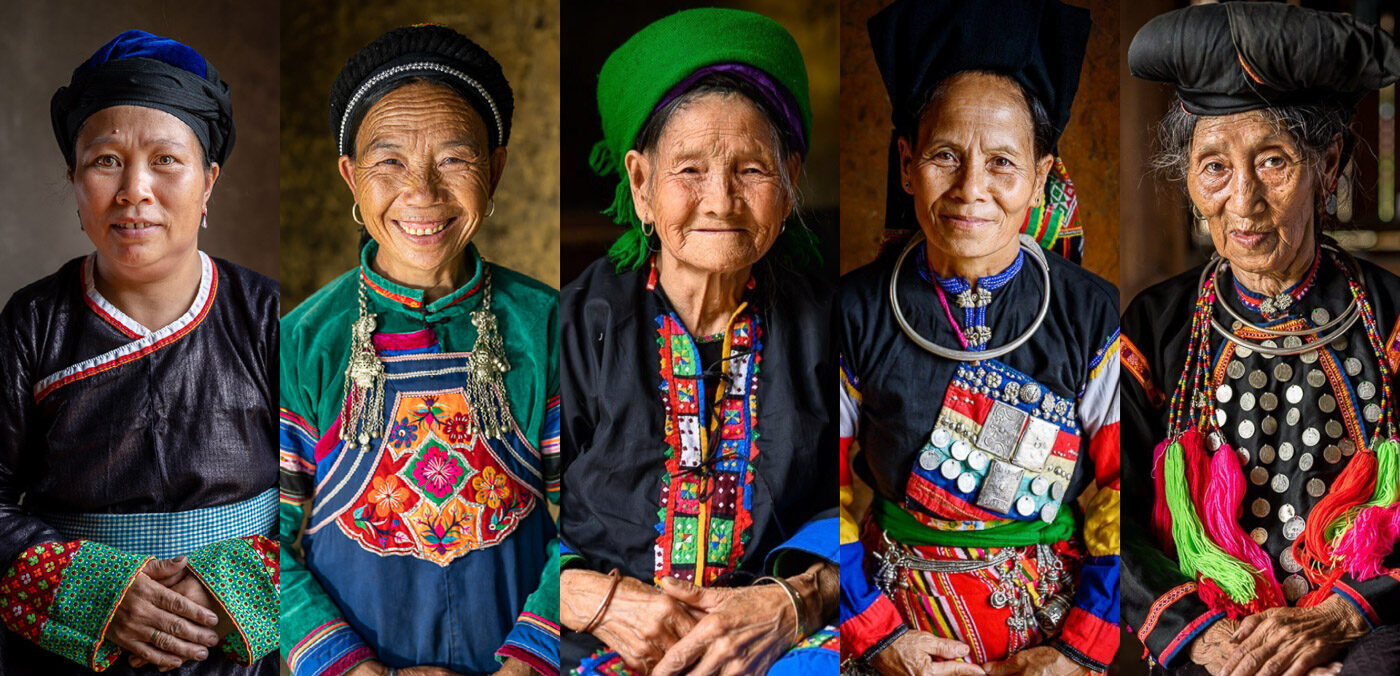 Visiting indigenous villages, visitors can immerse themselves in authentic cultural experiences, from participating in harvest festivals to enjoying local specialties such as Khao cakes or five-color sticky rice. This vibrant cultural heritage adds vitality to the geological wonders of the Cao Bang Geopark.
Visiting indigenous villages, visitors can immerse themselves in authentic cultural experiences, from participating in harvest festivals to enjoying local specialties such as Khao cakes or five-color sticky rice. This vibrant cultural heritage adds vitality to the geological wonders of the Cao Bang Geopark.
3.2. Ban Gioc Waterfall
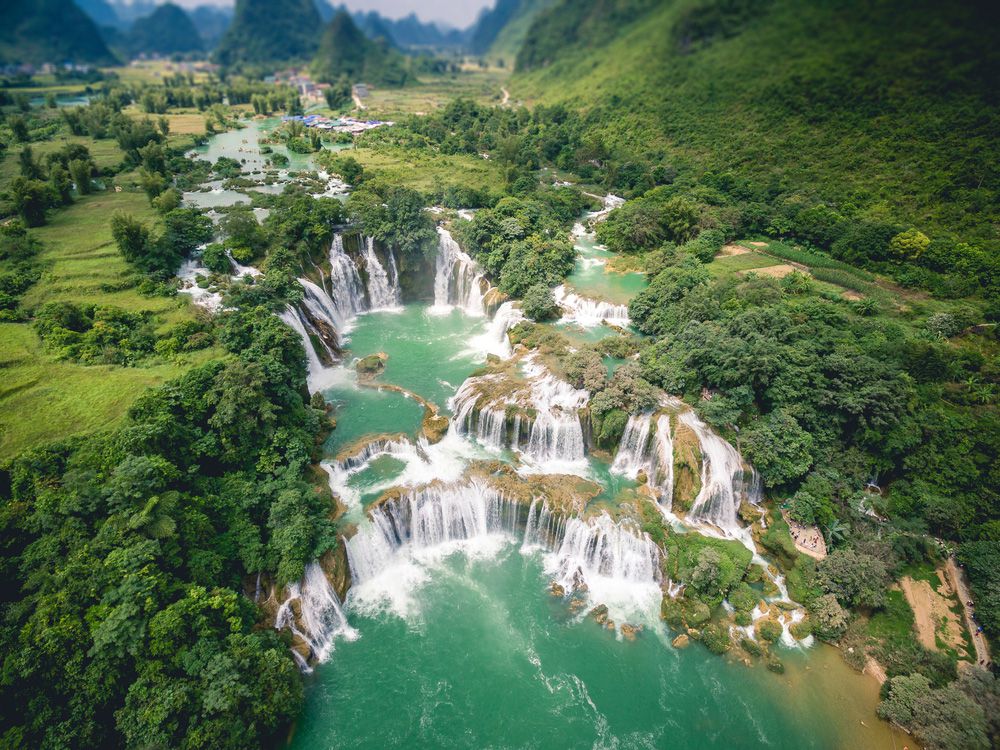 Ban Gioc Waterfall is one of the most iconic landmarks of Cao Bang Geopark and one of the most majestic waterfalls in Southeast Asia. This natural wonder, located on the border with China, cascades down in multiple tiers, creating a show of water and mist. Surrounded by lush vegetation and limestone mountains, it offers visitors a relaxing setting all year round.
Ban Gioc Waterfall is one of the most iconic landmarks of Cao Bang Geopark and one of the most majestic waterfalls in Southeast Asia. This natural wonder, located on the border with China, cascades down in multiple tiers, creating a show of water and mist. Surrounded by lush vegetation and limestone mountains, it offers visitors a relaxing setting all year round.
3.3. Phong Nam Valley
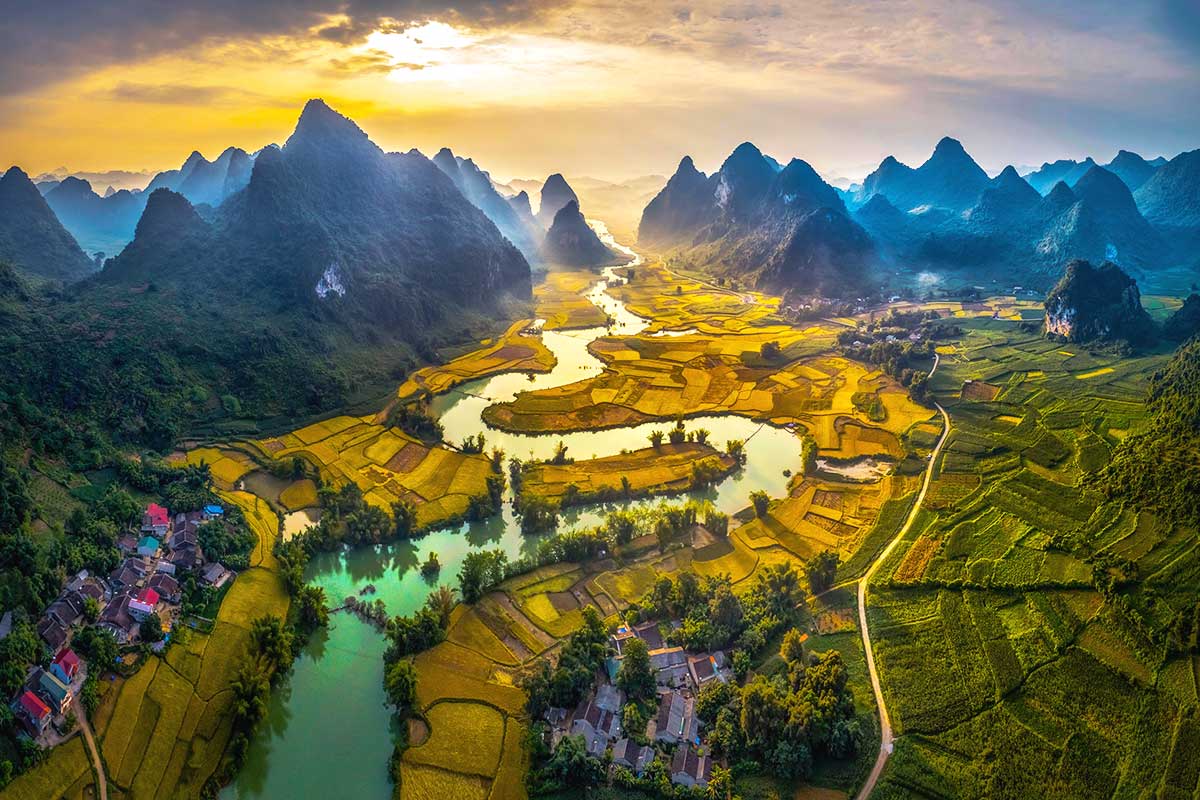 Located in the heart of the Cao Bang Geopark, Phong Nam Valley is a hidden paradise of lush green rice fields, winding rivers and peaceful stilt house villages. Surrounded by limestone mountains, the valley is an ideal place for cycling, photography and cultural exchange with the Tay and Nung communities. During harvest season, the golden rice fields create a poetic scene, making this one of the most beautiful rural areas in Northern Vietnam.
Located in the heart of the Cao Bang Geopark, Phong Nam Valley is a hidden paradise of lush green rice fields, winding rivers and peaceful stilt house villages. Surrounded by limestone mountains, the valley is an ideal place for cycling, photography and cultural exchange with the Tay and Nung communities. During harvest season, the golden rice fields create a poetic scene, making this one of the most beautiful rural areas in Northern Vietnam.
3.4. Angel Eye Mountain
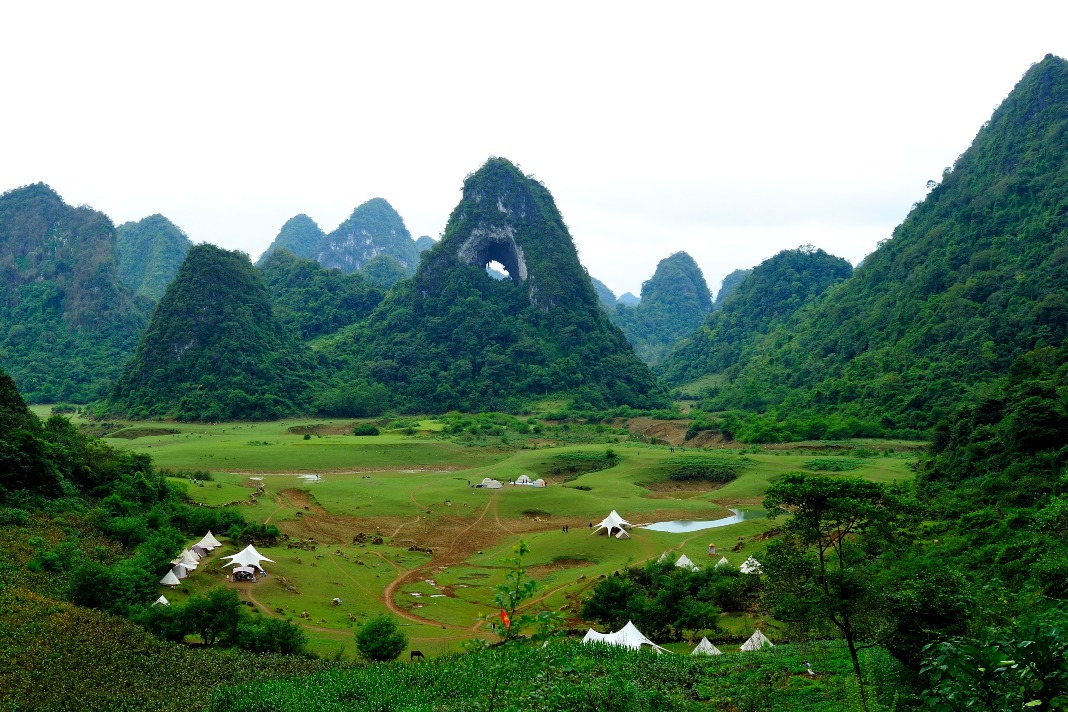 This geological wonder has a giant circular hole through the limestone peak – formed millions of years ago. Surrounded by vast grasslands, Angle Eye Mountain is an ideal place for camping, trekking and cultural events. At dawn and dusk, when the golden light shines through the Angle Eye, the mountain takes on a magical beauty that fascinates any visitor.
This geological wonder has a giant circular hole through the limestone peak – formed millions of years ago. Surrounded by vast grasslands, Angle Eye Mountain is an ideal place for camping, trekking and cultural events. At dawn and dusk, when the golden light shines through the Angle Eye, the mountain takes on a magical beauty that fascinates any visitor.
3.5. Thang Hen Lake
The Thang Hen Lake System consists of 36 natural lakes scattered across the mountains. During the rainy season, these lakes merge into one large emerald green lake, while during the dry season, they split into many smaller lakes, each with its own unique beauty.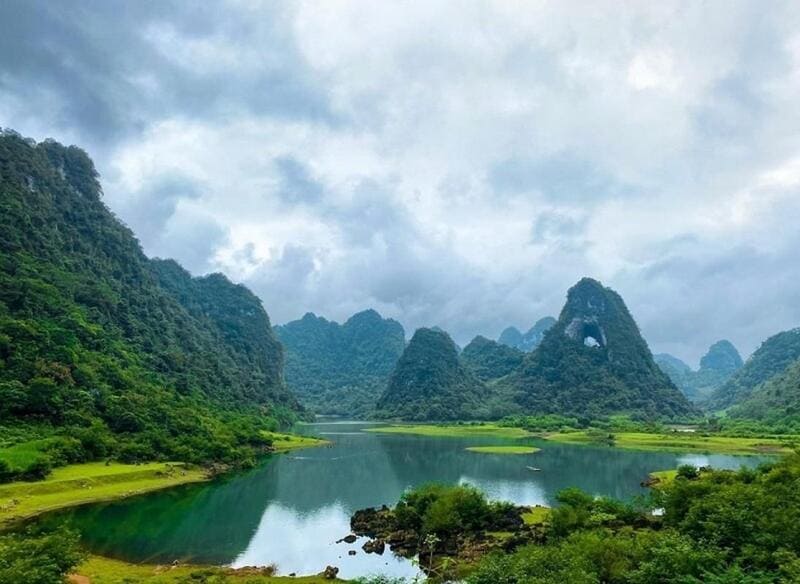 Surrounded by lush green forests and limestone mountains reflecting on the crystal clear water, Thang Hen is a picturesque landscape and a must-see destination for tourists.
Surrounded by lush green forests and limestone mountains reflecting on the crystal clear water, Thang Hen is a picturesque landscape and a must-see destination for tourists.
3.6. Nguom Ngao Cave
Stretching more than 2,000 meters underground, Nguom Ngao Cave is a masterpiece of nature. Inside, thousands of stalactites and stalagmites form shapes resembling coral, animals, and even mythical figures.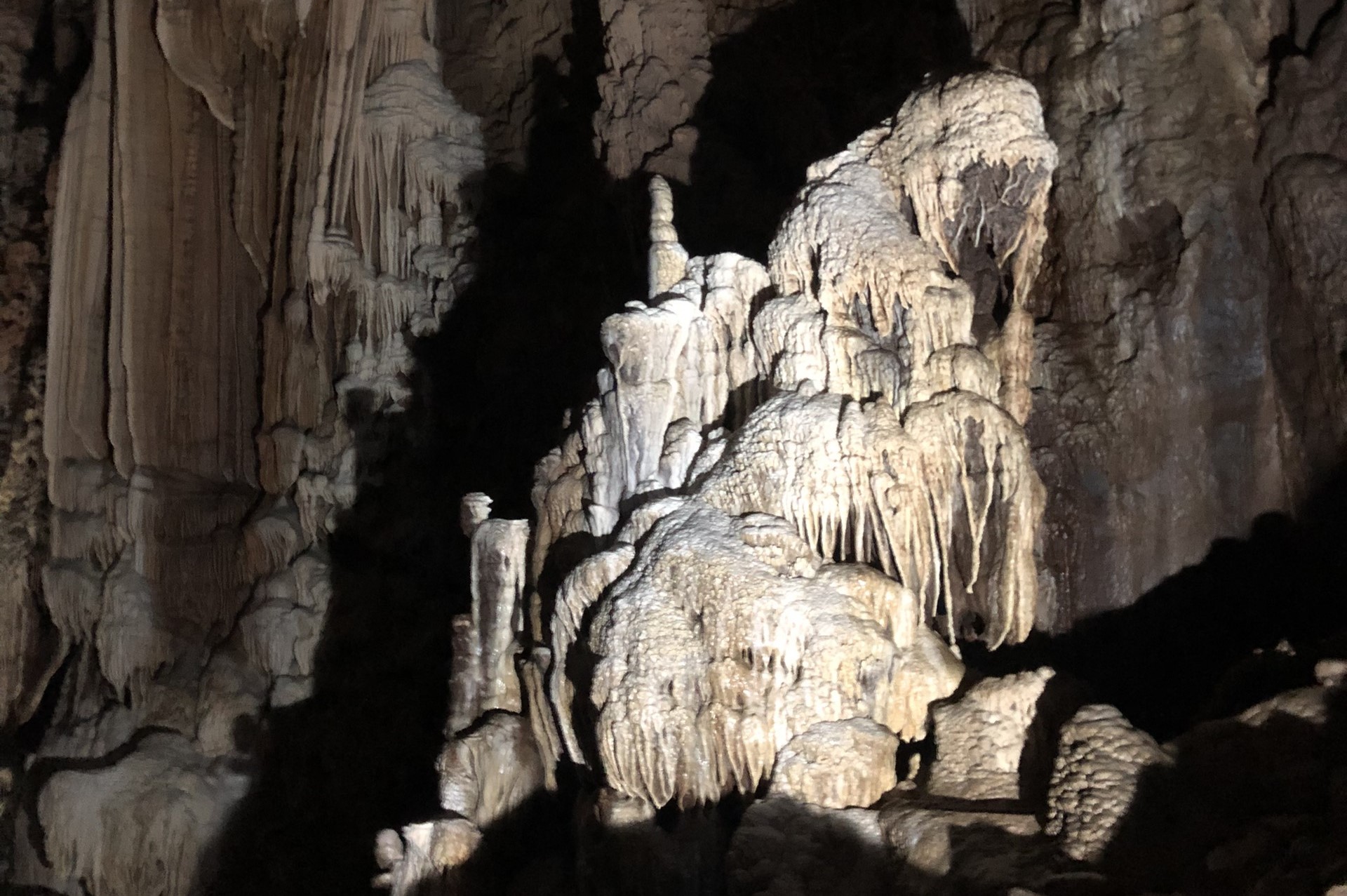 Local legend has it that the cave was once home to tigers, hence the name “Nguom Ngao” which means “Tiger Cave” in the Tay language. Its proximity to Ban Gioc Waterfall makes it easy to explore both sites.
Local legend has it that the cave was once home to tigers, hence the name “Nguom Ngao” which means “Tiger Cave” in the Tay language. Its proximity to Ban Gioc Waterfall makes it easy to explore both sites.
3.7. Pac Bo Cave
Pac Bo Cave is a historical site in Truong Ha commune that is a sacred relic in the history of Vietnam’s revolution. In 1941, President Ho Chi Minh returned here after 30 years to lead the struggle for national independence.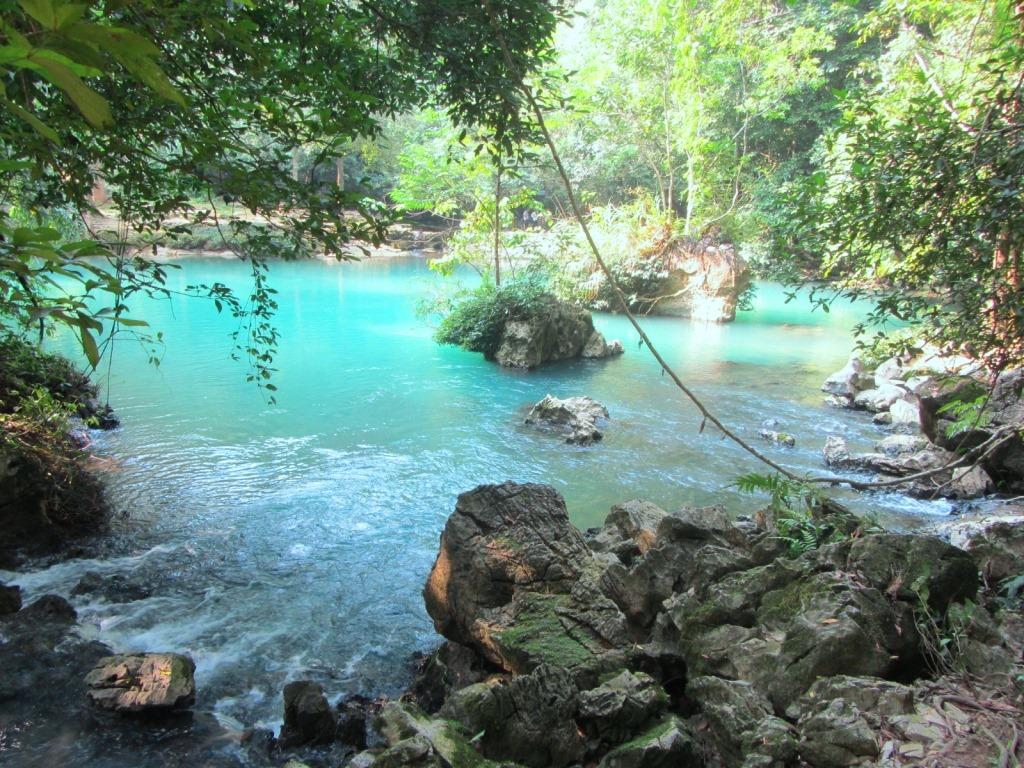 Visitors can admire the simple stilt house where he lived, the Lenin stream with its clear blue water, and the majestic Cac Mac mountain nearby. Pac Bo is not only a place to learn history but also a peaceful landscape where history and nature blend together in a subtle way.
Visitors can admire the simple stilt house where he lived, the Lenin stream with its clear blue water, and the majestic Cac Mac mountain nearby. Pac Bo is not only a place to learn history but also a peaceful landscape where history and nature blend together in a subtle way.
4. Cao Bang Geopark price
Unlike many other tourist attractions that require a single entrance fee, Cao Bang Geopark is a large open area covering more than 3,000 km², so there is no general admission fee for the entire park. Instead, visitors will pay entrance fees at specific attractions within the park. Here are some of the most popular attractions and their estimated costs:- Ban Gioc Waterfall: around 45,000 VND per person.
- Nguom Ngao Cave: about 45,000 VND per person.
- Pac Bo Historical Complex: around 25,000 VND per person.
- Thang Hen Lake: usually free of charge or a small local fee (10,000 – 20,000 VND) depending on the site you visit.
- Angel Eye Mountain & Phong Nam Valley: mostly free to visit, though local community services such as parking or guided tours may cost a small fee.
5. Tips for visiting Cao Bang Geopark
To fully enjoy your trip to Cao Bang Geopark, here are some useful tips:- Best time to visit: The best season is from September to October (clear skies, golden rice fields and majestic Ban Gioc waterfall) and from March to May (cool weather with peach and plum blossoms). Avoid the peak rainy season (June – August) as landslides may occur.
- Travel options: From Hanoi, you can take a bus (6 – 8 hours) or rent a private car. If you are confident, motorbiking is the most adventurous way to explore the three scenic routes of the Cao Bang Geopark.
- Accommodation: Cao Bang City has plenty of hotels and guesthouses, but for a more authentic experience, try a homestay in an ethnic village like Phia Thap or Pac Rang, where you can immerse yourself in Tay or Nung culture.
- What to bring: Comfortable walking shoes, sunscreen and a light jacket and don’t forget to bring your camera to take pictures.
- Local Etiquette: Respect the traditions of the ethnic minorities. Ask before taking photos of people and try some local specialties like five-color sticky rice or ant egg cake.
- Hire a local guide: The Cao Bang Geopark is huge, and a local guide can give you deeper insights into both the geology and the culture.
